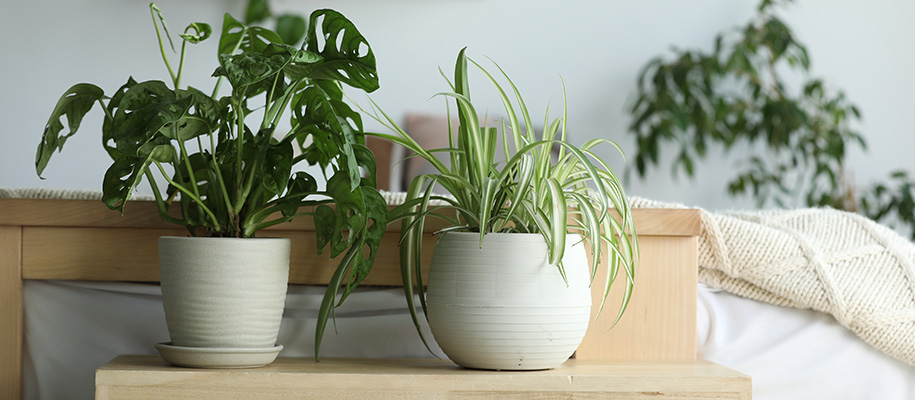Houseplants have become a popular and favorite option when it comes to indoor decoration. Young people in particular have proved to be keen in planting and growing their own plants this past year. Students in dorms often gain a sense of home and responsibility by having houseplants, and living in a place that doesn’t have much space isn’t an issue for plant care! However, the ideal decoration spot may not always be the perfect spot for their growth. Below, you can find the most easy-to-grow plants and some crucial must-knows for helping them flourish in a dorm environment.
The best plants to grow in your dorm
Below are five of the best and easiest plants for students to care for in a dorm room.
1. Aloe vera
Aloe vera is first on this list as it’s one of the easiest plants to take care of, making it an appropriate plant for students living in a dorm. Aloe vera is made for tropical and dry desert environments, thus it can live quite long indoors. All that aloe vera needs is water. Make sure to water it deeply and wait until the top inch of the soil is dry before you water it again. But it doesn't need water constantly, so be careful to not overwater, which can lead to root rot. Usually once a week is enough. The light it requires is medium to direct. Aloe vera is also known for being useful in treating minor skin problems, so you can use the juices from inside the leaves to treat scrapes and burns.
2. Succulents
Another lovely option for your dorm room are succulents. These plants come in various colors and shapes—you can pick your favorite among spiky green, purple, yellow, and rose-shaped red plants. Succulents need direct sunlight, which means they need to be placed near a window—if that's not possible, set up a small grow light. They don't need a lot of water, so you don't have to worry as much about that, and they grow in any type of pot or cup, so they’re easy to keep as indoor plants.
Related: 7 Ways to Boost the Mood of Your College Apartment
3. Lucky bamboo
Do you need a bit of luck around finals season? Then choose lucky bamboo as your dorm plant. This plant, which is said to bring good luck, is easy to maintain. It likes bright sunlight, but too much direct light can harm them. The soil they grow in should be kept moist but not soaking, so be sure to keep it in a planter that drains well. As they grow, lucky bamboos can become heavy, so they need trimming from time to time.
4. Snake plant
If you’re looking for a slow-growing plant—one that can stay healthy in a dark corner of your dorm room with low amounts of water—then a snake plant is the right one for you. You only need to water it when the soil is dry. Plus, they come in a variety of shapes and sizes, so you can choose the one that fits your space best.
5. Bromeliad
A plant of beautiful colors and textures, bromeliad needs to be put in front of a window, and it should receive bright but not direct light. Direct sunlight might cause its leaves to burn. Watering your bromeliad plant once a week is more than enough. If you’re busy with classes, clubs, and other things that take priority, you don’t have to worry about watering it every day.
Related: The Ultimate List of College Dorm Room Essentials
How to care for your plants
You should always keep your space and lighting in mind when plant shopping. Make sure you have enough space near a window for your pots, as some plants need direct light. The other important factor is watering; some plants need daily watering, while others need it more rarely. An overabundance of water can cause plants to die. Typically, indoor plants require weekly watering so the soil remains moist but not waterlogged. Soil is also important for plants, as it maintains their roots, provides support, and stores nutrients. Plants can produce reliably for several months with enough light and moisture.
Lack of adequate light
Light is the most common factor limiting the growth of plants in some areas of your home, and if you have a small space like a dorm or apartment, sometimes you won’t have direct sunlight to help your plants grow. Supplementary electric lighting is usually the easiest and least expensive way to provide enough light for plants that don’t receive adequate natural light.
Luckily, most plants that fall under the "indoor plant" umbrella are meant to withstand poor lighting conditions. One good lighting tip is adding a mirror in a position that can reflect natural light from a window. But if your room has no windows, LED grow lights can be used as an alternative source of light to simulate sunlight for the plants.
Why do plants need light?
Light is the single most important variable concerning plant growth and development. Light provides the energy plants need to make food to grow and flower. Plants are the only organisms able to use the energy from light to produce sugars, starches, and other substances needed by them and other living organisms. If your dorm room faces south and receives direct sunlight for most of the day, you may even be able to produce a mini windowsill garden. Windows that only get light for part of the day can still grow some legumes, herbs, and primarily cool-season, leafy greens like lettuce. If the window isn't a possibility, grow lights allow you to hang the fixture above a shelf and grow the plants beneath it.
One final tip: When relocating a plant that has outgrown its pot, move it to one that’s two to four inches wider. And from the beginning, select bigger-sized pots for plants that develop rapidly.
Related: The Ultimate Guide to Having a Pet Fish in College
Keeping a plant alive in college isn’t as difficult as it might seem. While almost all plants grow well hydroponically, certain varieties are more efficient to produce than others. Thankfully, the internet is full of advice and tips these days, so you can always research and expand your knowledge in plant care until you become the best plant parent.
Check out the tag “dorm rooms” for more advice on decorating, getting along with roommates, and more.







